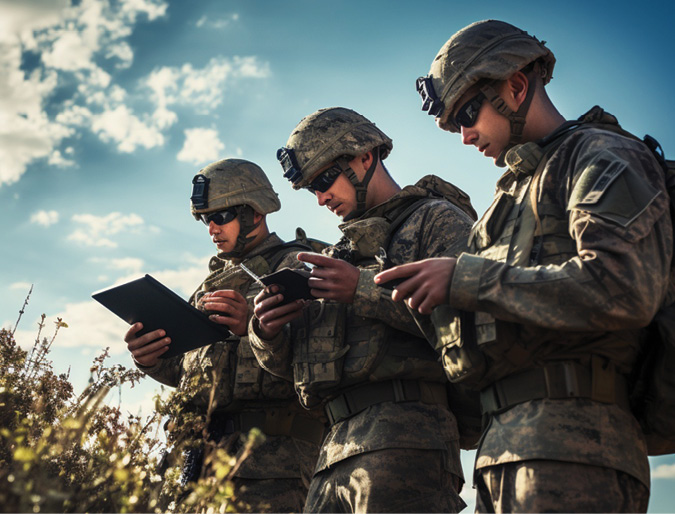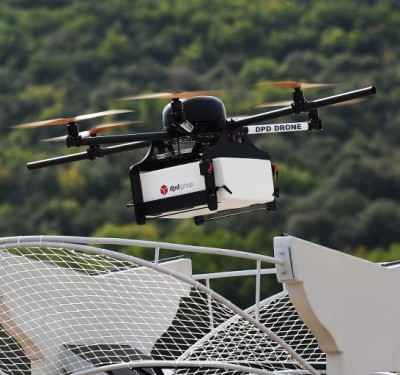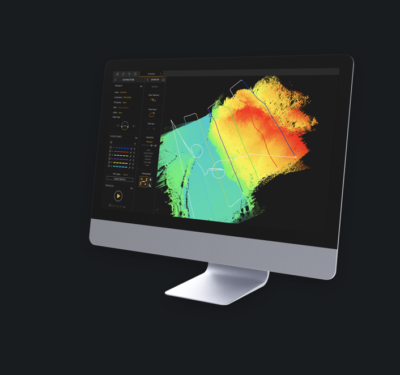In September, Skyfire Consulting announced its acquisition by Echelon AI, an autonomous and swarming AI company for UAS, backed by Andrew Ng’s AI Fund. The combined entity, SkyfireAI, will integrate AI with UAS technologies to support critical missions for public safety and global defense applications.

The combined company wields deep technical expertise in AI/ML, applied physics and uncrewed flight systems. Skyfire and Echelon AI’s founders and AI experts joined Inside Unmanned Systems to discuss the path ahead, formally joining Skyfire’s UAS hardware with Echelon’s UAS AI software.
Matt Sloane, co-founder and chief strategy officer, Don Mathis, co-founder and CEO and Dr. Brian Davidson, co-founder and CTO, leverage their signigicant experience across the DOD, emergency response and the private sector to deliver SkyfireAI’s solutions.
IUS: Can you discuss the background of the working partnership, and now merger, of Skyfire Consulting and Echelon AI?
MATHIS: When we created Echelon AI, there were two driving elements. One was a defense incentive, and one was for public safety. The ability to create automation routines, using AI to enable not just a one-to-one ratio between the pilot and the hardware, but eventually, multiple hardware pieces to the individual human piece. As a software vendor, Echelon began teaming up with Skyfire early on. The culture between organizations is everything. And it was a great fit here.
SLOANE: There are so many disparate pieces of software and hardware that don’t work together and don’t talk to one another. And we realized within the last two to three years, as the drone as first responder [DFR] concept came to market, that there were a lot of pieces in the middle that we’re missing and identified that we really needed to find that software expertise. Echelon filled that gap.
IUS: Can you discuss how AI software is advancing drone swarming capabilities?
MATHIS: To the extent that we are looking at swarming, it tends not to be in the public safety realm. At this stage in the regulatory environment, it tends to be in the defense realm. There is some degree of sensitivity, from a confidentiality perspective, on specifics related to the actual technology. No one in the world is really doing true swarming as we believe in defining it, except perhaps the Israeli Defense Forces. And in the case of China, it’s a maybe. And those are both nation states. From the perspective of the use cases we’re developing, our true north of where we develop over the course of a five-year time frame, is to enable something that’s developed in collaboration with a number of other entities, and probably under the umbrella of a larger defense prime. We very much believe in a steppingstone approach to developing an increased sophistication around our technology stack.

IUS: Can you go into a little more detail about what that true north scenario may look like in practice?
MATHIS: It’s a nice true north to say 10,000 drones over the straight of Taiwan. But the reality is, there’s probably only 20 use cases around the planet for 10,000 drones in this form. There are, however, probably 10,000 use cases for 20 drones in a swarm. That’s what our eye is on in the near term.
IUS: Can you discuss the role autonomy plays in enabling swarming?
MATHIS: Autonomy is a prerequisite. For the first implementations of practical swarming, you’re going to see it in the case of forward operating bases, with a set of perimeter-based drones or defensive position boundary lines. Think of the northern border of Israel, for example. Or think about more kinetic environments, like what you see in Ukraine, or associated with different positions in the South China Sea. These are examples of not 10,000, but 20 drone type deployments. This is where you’ll start really seeing that technology take off.
IUS: “Autonomy” and “swarming” are both terms that can be a little bit vague. Nailing down accepted standard definitions of what constitutes swarming or autonomy is important.
MATHIS: That’s right. And there’s an enormous difference. Our prerequisites are independent operations, where the drone has hardware awareness, environment awareness in a swarm situation, and fellowship awareness. In a multi-ship formation, the drones are aware of each other, as well as the mission parameters as they change, and all the environmental considerations and hardware states that go into executing that mission. Real autonomy means you’re able to do that in a way that is not a rule bounded algorithm, but a proactive agent-based approach to structure the AI.
DAVIDSON: We think of swarming as using multiple drones to achieve an objective. So that requires coordination between the individual drones, and that coordination can be done before they are launched, or it could be done while they’re executing their mission. AI technologies allow us to configure all the parameters associated with each of the individual drones in an intelligent way. Factors include the hardware, the conditions and what the objective is. Watching a border is very different than looking for something over a large land area. The AI technology allows us to do things that take many humans and an elaborate command and control and allows much of that to be automated with the objective in mind, on the fly.
IUS: In unpredictable situations, or dynamic environments, this kind of self-learning within a human-defined decision framework seems very advantageous.
DAVIDSON: Absolutely. The AI reduces the need to have a large team of experts that know how to react at the ready. The system can learn, the system can react. It no longer requires a team of experts to operate multiple drones.

IUS: Could you characterize what the approach is with the AI models you’re using, and any novel or innovative things that are going on with edge or generative AI?
DAVIDSON: I can explain our philosophical approach. When you have multiple drones trying to stream back multiple videos, it becomes a huge bandwidth problem, and then it also becomes a human problem. Who can watch even six drones’ worth of video, let alone 60? The bandwidth becomes impossible. You could be in environments where you just don’t have that bandwidth at all. So, anything that can be done on the edge alleviates all those problems. We use AI on the edge to provide information to operators, to give them what the drone is seeing and doing without needing the huge bandwidth to get the video into the cloud and have it processed. That allows us to do more probabilistic models and approximate models. We use generative AI as an interface technology. It’s a great way to interface between technologies.
MATHIS: From an interface perspective, anywhere you can proactively reduce the friction that the user experiences is a positive. If the user is, for example, a dispatcher sitting in a 911 center, they don’t have the time or mental bandwidth to troubleshoot a funky app. They’ve got to deploy the drone, and they’ve got to deploy it fast to enable a lifesaving emergency response. You want to enable that user to effectively discharge that mission with as little friction as possible.
IUS: Can you talk about some of the mission outcomes that have been improved as you’ve worked together, or mission outcomes that you envision will be enhanced through your partnership and through the technology?
MATHIS: With our twin objectives of defense and public safety, response time right off the bat. Can a drone respond faster in the event of a 911 call? Or imagine a scenario where you’re doing border security at a forward operating base, perimeter security. You’re using cameras to monitor a threat zone, and a camera goes down. And at the moment the camera goes down, you auto launch a drone to put visuals into place. We’ve seen this as a real need in the defense marketplace. Our current objective in public safety is not to have an entirely automated flight where there is no human associated, but it’s instead to enable the human who’s in the loop, to serve as a commercial pilot flying a 737 would. You can push back from the gate, you can conduct the flight, you can land and never touch the yoke. We enable similar operations for drones, the operator is able to observe and take in the AI enhanced telemetry and the operation of the multiple sources of sensor data, put together in a common user interface, so they have a substantially enhanced situational awareness. Another category we think is important is autonomy equals force multiplication.
SLOANE: From the past 10 years of working with public safety agencies, a real limiting factor is manpower. From a practical perspective, how do we do more with the people that we have available? Ultimately, the drone is the least interesting part of the whole operation. We’re trying to get better data, so we can make better decisions. And in public safety and defense, better data and better decisions leads to less people getting hurt. Doing that on the fly is the most important thing and being able to do that quickly and easily.
MATHIS: It’s complex missions that you can do with drones that you can’t do with people without putting those people in danger. How do you do things where you know a person on the ground would be in physical danger, and you can eliminate, or at least significantly reduce that danger, like in a natural disaster scenario. There are opportunities to increase situational awareness without putting people at risk.
IUS: What is your perspective on the forthcoming FAA Part 108 rule making process that’s going on, and the regulatory environment more generally? What are you looking forward to being able to unlock once there is a Part 108 rule?
SLOANE: I’m on the air advocacy committee at AUVSI and have been up to Capitol Hill a couple of times this year. I think we’re all very excited for Part 108, and I think that it really will start to bring us into a new age of BVLOS and autonomy. The FAA, to their credit and to their detriment, is very wary of autonomous technology in general. But at the same time, there are non-critical operations where we can rely on the AI. Not to take over, but we want to reduce our task saturation as much as possible. So, we’re very bullish on Part 108, we’ve spent a lot of time doing BVLOS waivers for public safety agencies. I’m looking forward to the day where that is the de facto way to do things, versus having to ask permission every single time. We’re particularly interested in how this leads to getting human beings off rooftops when we’re launching drones. They can’t do a very good job of seeing the drone when it’s two miles away anyway. I’d much rather have technology assist with that.
IUS: Can you elaborate a bit more on adoption with regard to public safety applications?
SLOANE: I think that in the public safety space, we’ve been seeing a lot of drones for policing technology, using cameras for monitoring situations. I do think, and I feel strongly about it from my background in EMS, that we’ll be using drones to deliver lifesaving technologies as well. Defibrillators, Narcan, EpiPens and trauma kits and things like that. It’s not something that you see a lot of in the public safety drone use space today, but we are very much looking toward that space. As much as we talk about autonomy and we talk about real AI, there is still very much a human component, which is why we spend a lot of time training operators. You wouldn’t put a manned aircraft pilot in an airplane without a whole bunch of training. We’re doing the same thing in the public safety unmanned space.
MATHIS: One of the takeaways for us has been the more adoption that we’re able to see effectively within public safety positively impacts sectors beyond public safety. One of our answers to achieving greater ubiquity of drone adoption in the National Airspace System is making sure that you win hearts and minds via effective DFR programs, effective public safety across fire, EMS and police. That helps pave the way from a regulatory point of view, and from the general public’s point of view on the utility of drones and how they can be applicable in other use cases. And done in a way that’s respectful of individual privacy and doesn’t feel invasive.
IUS: Any thoughts on adoption of new technology on the defense side?
MATHIS: Historically, we’ve seen defense primes operating under the remit of DOD contracts where new innovations come out and are adopted slowly over the pace of years and years. We think you’re going to see much more of a public private model evolve. There’s a democratization of the technology, seen in the efforts around Replicator, for example, the Defense Innovation Unit. That model that you’re starting to see emerge of a scrappier procurement methodology and more of an emphasis on public private partnership, I think it’s going to enable companies like us to have greater access to serving these mission needs. And I think it’s going to characterize more of how this gets done going forward than the big procurement programs of the past.






